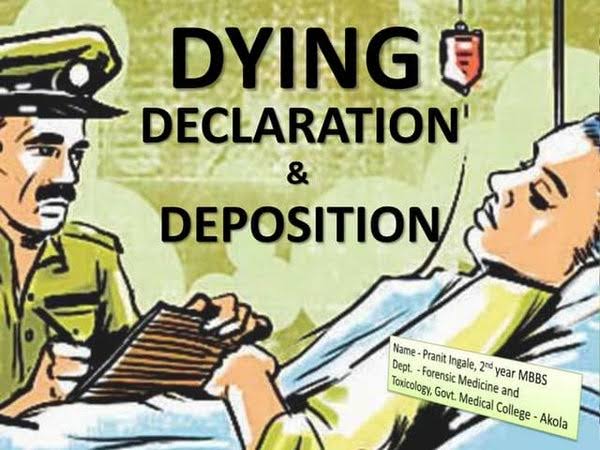Ajit K. Sengupta, J.@mdashThe assessee is a limited company engaged in the business of manufacture and sale of aluminium foils. The assessment year involved is 1980-81. The assessee called for deducting the following three items of excise duty while computing the business income:
|
|
Rs. |
|
(1) Demand notice dated 3-8-1979 |
2,57,304 |
|
(2) Demand notice dated 20-9-1979 |
56.84,425 |
|
(3) Estimated liability not covered by demand notice |
25,30,000 |
The case of the assessee before the ITO was that it was not liable to excise duty. It moved the High Court to pass an interim order restraining the Central Excise authorities to realise the duty. By a notification dated 13-12-1980 the Government exempted aluminium foils from payment of duty if they are made for export. This exemption became effective from 5-1-1981, i.e., subsequent to the previous year under consideration. The ITO disallowed the claim of the assessee on the ground that the excise duty related to a period prior to the previous year under consideration and so the same was not allowable under the mercantile system of accounting.
2. On appeal, the Commissioner (Appeals) found that the sum of Rs. 2,57,304 was relatable to the clearance of goods made during the year 1979, which is the relevant previous year now under consideration. Hence, he held that the statutory liability to pay the duty arose on the clearance of the goods notwithstanding the fact that the assessee was disputing its liability. Relying on the decision in the case of
3. The assessee came up in appeal to the Tribunal and contended that the other two items should also have been allowed. On the other hand, the revenue supported the disallowance of those two items. The department also came up in appeal contending that the allowance of Rs. 2,57,304 by the Commissioner (Appeals) was erroneous and the same should be reversed. The Tribunal considered the contentions of both the parties as well as the facts on record. It found that in the case of Kedarnath Jute Mfg. Co. Ltd. (supra) it has been held that the statutory liability to pay a duty arises on the happening of event attracting the levy of duty. There was no dispute about the fact that the clearance in respect of which the sum of Rs. 2,57,304 was levied as duty was made during the previous year under consideration. It was the clearance of the goods which attracted statutory excise duty. Hence, the Tribunal held that the sum of Rs. 2,57,304 was rightly allowed by the Commissioner (Appeals) as a deduction. However, regarding the other two items, the Tribunal found no nexus between the expenses and the previous year under consideration. The Tribunal observed that the clearance of the manufactured products occurred long before the previous year under consideration. Hence, relying on the decision in the case of Kedarnath Jute Mfg. Co. Ltd. (supra) the Tribunal upheld both the allowance of Rs. 2,57,304 and the disallowance of Rs. 82,14,425 made by the Commissioner (Appeals).
4. The Tribunal having rejected the reference application u/s 256(1) of the income tax Act, 1961 (''the Act''), the following questions were referred pursuant to the direction of this Court u/s 256(2):
1. Whether, on the facts and in the circumstances of the case, the Tribunal was justified in holding that the statutory liability to pay excise duty arises at the time of clearance of the goods ?
2. Whether, the Tribunal should have held that the liability to excise duty is attracted on the point of production or manufacture of the goods and, accordingly, the liability for Rs. 2,57,304 being referable to earlier year was not admissible as a deduction in the assessment year 1980-81?
3. Without any prejudice to the above questions of law, whether, in view of the High Court''s stay order there was any statutory liability to pay excise duty during the previous year relevant to the assessment year 1980-81 in respect of the amount of Rs. 2,57,304 and if there was no such liability, whether the Tribunal was justified in allowing deduction of Rs. 2.57,304 in assessment year 1980-81?
5. Having heard the advocates for the parties, we are of view that the questions should be reframed as follows:
Whether, on the facts and in the circumstances of the case, the Tribunal was justified in holding that the liability in respect of the excise duty amounting to Rs. 2,57,304 is allowable as a deduction in the assessment year 1980-81?
6. At the hearing before us, Mr. Maltra, the learned counsel for the revenue, contended that no part of the liability claimed accrued during the relevant previous year as, according to him, the duties of excise are imposed on production or manufacture of goods and the taxable event occurs on the production or manufacture of goods. It is his contention that the liability to pay excise duty does not depend on the clearance of goods. He has submitted that In this case admittedly the goods were not manufactured during the relevant previous year and the question of levying the excise duty during the assessment year did not arise. We are, however, unable to accept the contention of the learned counsel on the facts and in the circumstances of the case.
7. The Supreme Court In Ujagar Prints v. Union of India [1989] 179 ITR 317 observed as follows:
Duties of excise are imposed on the production or manufacture of goods and are levied upon the manufacturer or the producer in respect of the commodity taxed. The question whether the producer or the manufacturer is or is not the owner of the goods is not determinative of the liability. The essential and conceptual nature of the tax is to be kept clearly distinguished from both the extent of the power to impose and the stage at which the tax is imposed. Though the levy is on the production or manufacture of the goods, the imposition of the duty could be at the stage which the law considers most convenient to impose as long as a rational relationship with the nature of the tax is maintained. (p. 348)
8. It is, no doubt, true that the duty is on the manufacture or production of goods, but as a matter of fact, in accordance with the rules, the duty is payable at the time when the goods are cleared from the factory premises. In this case, as we have already observed, the contention of the assessee was that it was not liable to pay any excise duty on aluminium foils. The assessee made a representation to the authorities for exemption, but without any success. The assessee thereafter moved a writ petition on 6-5-1980 against the show-cause-cum-demand notice dated 3-8-1979 issued during the relevant previous year. The High Court passed an interim order restraining the Central Excise authorities from levying duty on aluminium foils. Thereafter the Central Government issued a notification on 13-12-1980 exempting aluminium foils from the payment of excise duty for export under bond. This notification was made effective from 5-1 -1981. Accordingly, the goods manufactured and cleared prior to the said notification were liable to duty. In this case the show-cause-cum-demand notice was issued during the relevant previous year. The goods were also cleared during the relevant previous year and, accordingly, the assessee is entitled to the benefit of deduction of the liability covered by the said show-cause-cum-demand notice in respect of the goods cleared during the relevant previous year. It is true that the duty is disputed, but as we have observed, in view of the subsequent notification it became crystal clear that the Government did not allow exemption on the manufacture of aluminium foils prior to 5-1-1981.
9. Our attention has been drawn also to a decision of this Court in
10. In
11. Our attention has also been drawn to a decision of a Division Bench of this Court in
12. It is, therefore, not correct to contend that since the goods were not manufactured during the relevant previous year, the assessee was not entitled to the deduction of excise duty. Since the excise duty became real and enforceable inasmuch as the goods were cleared during the relevant previous year and the show-cause-cum-demand notice was also issued to the assessee during the same relevant previous year, although it may be that the assessee disputed the duty when the goods were manufactured or produced and, accordingly, moved the High Court, and the goods became non-dutiable with effect from 5-1-1981, the demand, although earlier disputed, became real and enforceable and the Tribunal was right in allowing the deduction in the previous year in question. For the reasons aforesaid, we answer the refrained question in the affirmative and in favour of the assessee.
There will be no order as to costs.
Sen, J. -
I agree.

